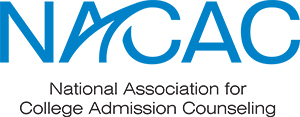Are you a student eager to jumpstart your college education? If so, you’ve likely heard about dual enrollment programs. In this blog, we’ll break down what dual enrollment is, the pros and cons of taking dual enrollment courses, and how to determine if it’s the right academic decision for you. Let’s get into it.
Table of Contents:
- What is Dual Enrollment & How Does It Work?
- Benefits of Dual Enrollment Programs
- 4 Reasons Dual Enrollment May Not Be a Good Fit
- Types of Dual Enrollment Programs
- How to Apply to Dual Enrollment Programs
- AP vs. Dual Enrollment: What’s Better?
- Frequently Asked Dual Enrollment Questions
- Final Thoughts
Key Takeaways:
- Dual enrollment allows high school students to earn both high school and college credit simultaneously, often through partnerships with community colleges. This opportunity gives students an academic head start and exposure to real college-level work.
- It can save time and money by reducing the number of college courses needed later, but credit transfer rules vary widely—especially with highly selective colleges—so research before enrolling.
- Dual enrollment isn’t for everyone. It requires balancing multiple workloads, aligning course choices with long-term goals, and sometimes navigating travel or scheduling challenges. For some students, taking Advanced Placement (AP) classes may be a more suitable option.
What is Dual Enrollment & How Does it Work?
Dual enrollment allows students to take college-level courses and earn high school and college credit at the same time. Dual enrollment programs are typically offered at community colleges or universities in partnership with certain high schools.
How it works:
- First, students need to determine eligibility. Most programs are open to junior and senior students, but younger students may qualify if they have exceptional academics.
- Students remain enrolled in their high school, but take one or more college courses during the school year or summer.
- Dual enrollment courses are typically intro-level courses or electives.
- Classes can take place on campus, online, or in their high school, depending on the program.
- Upon completion, students will earn credits that go toward their high school and college transcripts.
Dual enrollment is a way for students to challenge themselves academically and explore subjects in greater depth that may not be available to them through their traditional high school courses.
Related: AP vs. IB: Which One is Better?
Benefits of Dual Enrollment Programs
Cut Down on College Costs & Time In College
Students who complete dual enrollment courses can significantly cut down their cost to attend college. Dual enrollment programs are typically offered by community colleges, which are already an affordable option to students. Coupled with a reduced course load after their credits transfer, students can reduce the number of years they are required to attend college. Especially if a student starts taking dual enrollment courses during junior year, doing so gives them a 2-year head start over their classmates.
This is also ideal for college students who may be looking at transfer options or who are eager to dive into the workforce early.
Ease into College-Level Coursework
The transition between high school and college isn’t easy for many students. Dual enrollment programs give students the opportunity to experience college-level demands and ease into the expectations they’ll face once they graduate.
College Exposure & Demonstrated Interest
Dual enrollment programs also give students a chance to test-drive certain majors before officially declaring anything. This avenue may solidify their desire to major in a specific area or it may be an eye-opening experience that leads them to choose something else. No matter what happens, a key benefit of dual enrollment programs is getting a feel for college early. This can act as another way to conduct college research and help students identify if that college is the right fit for them - academically, socially, and culturally.
It’s also no secret that dual enrollment programs strengthen a student’s college application. While it won’t be the determining factor for your acceptance, it is impressive when a student can juggle dual enrollment courses and their high school demands. For students who have their eyes set on a college, taking dual enrollment courses at that school can even go a long way in demonstrating their interest to admissions officers. This route not only demonstrates your long-term interest but also your initiative to soak up as much from the college as possible.
4 Reasons Dual Enrollment Programs May Not Be A Good Fit
Not Every Dual Enrollment Program is Transferable
Some colleges won’t accept certain credits. If you have your eyes set on a specific college, such as Harvard or other highly selective institutions, you may want to reconsider taking dual enrollment courses.
The Courses Offered Don’t Align with Your Longterm Study Goals
It goes without saying, but students shouldn’t just take any available course because it’s offered. If you’re unable to register for a course that aligns with your major or long-term academic goals, you may want to consider alternatives.
Travel and Logistics
Not every dual enrollment course is offered online. In some cases, students may be required to travel to and from a campus in order to complete their studies. Depending on the distance and a student’s ability to arrange transportation, it could be an added headache during the school year.
Potentially Overloading on Coursework
Balancing high school and college work is no easy task. Some students assume that simply taking a dual enrollment course is impressive to colleges. The reality is that colleges will be impressed when a student performs well in all their courses, including dual enrollment. If students aren’t careful, they run the risk of overloading on their academics and harming their performance. Sometimes, it is wiser to maintain your existing workload and do exceptionally well than to spread yourself too thin.
Types of Dual Enrollment Programs
There are several types of dual enrollment programs available to students:
- High-School-Based or Concurrent Enrollment: Dual enrollment courses are part of a student’s high school curriculum and are applied to their high school and college transcripts.
- Online Dual Enrollment: College-level courses offered through remote learning and conducted by college professors.
- Early College High School (ECHS): Students simultaneously work toward a high school diploma and an associate degree.
- On-Campus Dual Enrollment: Students attend in-person classes at a partnering college.
- Career & Technical Dual Enrollment: This pathway is focused on obtaining technical certifications.
How to Apply to Dual Enrollment Programs
Applying to dual enrollment programs can be intimidating, but it takes just 4 easy steps:
- Check your eligibility. Most students can start taking dual enrollment courses in junior year, but younger students may be eligible for dual enrollment if specified academic expectations are met.
- Meet with your school counselor. Discuss your interest with a school counselor. They will help identify opportunities and raise any potential concerns or challenges you need to address beforehand.
- Select your chosen school and complete the application. Most colleges have an online application that students must complete to be considered for dual enrollment.
- Register for courses. Assuming you’ve been approved by the college, you will then need to create a student portal, upload any important information, and begin registering for your desired courses.
AP vs. Dual Enrollment: What’s Better?
Each year, students ask us, “Should I take Advanced Placement or Dual Enrollment? Which one will colleges like more?” The truth is, there is no one-size-fits-all answer. Frustrating, we know. Both AP and dual enrollment can give you an academic boost and prepare you for college-level work, but they each come with trade-offs.
|
Advanced Placement |
Dual Enrollment |
|
|
Difference |
Standardized classes are offered in high schools. |
College courses are typically offered on campus. |
|
Organizer |
The College Board. |
Independent Colleges and Universities. |
|
Scoring/Credit |
Credits are awarded based on how high students score on exams. |
Credit is awarded regardless of performance. |
|
Recognition |
Recognized by over 6,000 institutions. |
Not recognized or transferred to highly selective institutions. |
|
Costs |
Exam fee. |
Tuition and material fees. |
Related: Limited AP Classes at School? Academic Advice You Need to Know
Which Should You Choose?
Choose AP courses if you want to challenge yourself academically, excel in standardized tests, and want to include academics that are widely recognized by colleges for flexibility.
Choose dual enrollment if you know the college you hope to attend accepts dual enrollment credits, you want credits without high-stakes testing involved, and you are eager to experience a real college environment early.
Frequently Asked Dual Enrollment Questions
Can I still take AP classes if I do dual enrollment?
Yes, students can take both if they desire to do so. However, be mindful of your workload and your ability to perform well if you choose to take both.
Will my dual enrollment credits transfer?
Not always. Public in-state institutions and community colleges are more likely to accept dual enrollment credits than private institutions. Be diligent in your research to make sure your chosen schools accept your dual enrollment courses.
Does dual enrollment cost money?
Yes, students will be expected to pay a tuition fee along with any additional materials required to complete their studies. In some cases, dual enrollment courses can be discounted or free to high school students. This will depend on their school and the institution offering the dual enrollment program. Be sure to check with your school counselor.
Final Thoughts
Dual enrollment can be a great way to give yourself a head start on your college journey. But like any academic decision, it’s important to weigh the pros and cons. Determine if dual enrollment is a doable option while you attempt to maintain your existing commitments. When done thoughtfully, it can be a great addition to your college application.
If you’re still curious about dual enrollment, your academic performance, and how certain decisions will impact your college candidacy, schedule a free consultation with Collegewise today to assess your performance thus far and learn how we can support you in your journey ahead.
/Webinar%20blog%20CTA%20(1).png?width=600&height=200&name=Webinar%20blog%20CTA%20(1).png)
About Us: With more than twenty-six years of experience, Collegewise counselors and tutors are at the forefront of the ever-evolving admissions landscape. Our work has always centered on you: the student. And just like we’ve always done, we look for ways for you to be your best self - whether it’s in the classroom, in your applications or in the right-fit college environment. Our range of tools include counseling, test prep, academic tutoring, and essay management, all with the support of our proprietary platform, leading to a 4x higher than average admissions rates.





